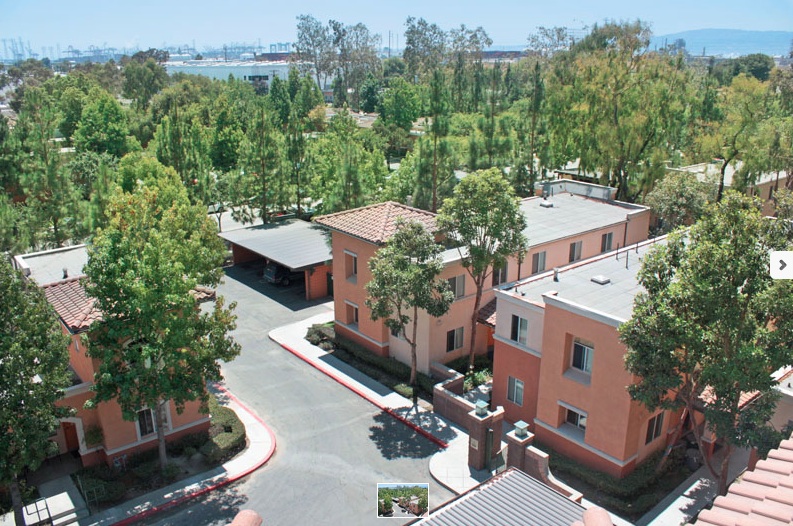The U.S. Green Building Council (USGBC) and Bank of America Charitable Foundation announced today the 11 projects selected for the 2014 Affordable Green Neighborhoods (AGN) grant program.
Each of these neighborhood redevelopment projects are pursuing certification under USGBC’s LEED for Neighborhood Development rating system and are notable for their planned affordable housing, compact design, commitment to green building and sites located near transit or other existing amenities.
“Neighborhoods are central to the health and wellbeing of an entire community, and providing affordable, sustainable housing is critical to USGBC’s mission of creating green buildings for all,” said Rick Fedrizzi, president, CEO and founding chair, USGBC. “We commend Bank of America for their support and commitment to sustainable communities and applaud this year’s grant recipients for their work to advance neighborhood scale sustainability in their communities.”
This program is funded by a two-year, $500,000 grant from the Bank of America Charitable Foundation. Since 2010, these grants have helped to create affordable, sustainable neighborhoods across the country. Each of this year’s projects will receive a $31,000 cash award as well as an educational package to support their pursuit of LEED for Neighborhood Development certification. In addition, five of the grantees will also receive a two-day, in-person technical assistance session with USGBC staff.
LEED for Neighborhood Development integrates the principles of smart growth, new urbanism and green building, while benefitting communities by reducing urban sprawl, increasing transportation choices and decreasing automobile dependence, encouraging healthy living and protecting threatened species.
The 2014 AGN grant recipients are:
• Bartlett Place – Roxbury, Mass.
• Butler Street Y Lofts – Atlanta, Ga.
• Essex Crossing – New York, N.Y.
• Faubourg Lafitte – New Orleans, La.
• Northwest Gardens – Ft. Lauderdale, Fla.
• Rebuild Potrero – San Francisco, Calif.
• Sheppard Square HOPE VI Revitalization – Louisville, Ky.
• TNT Eco-Innovation District – Dorchester, Mass.
• Villages at Cabrillo – Long Beach, Calif.
• West Grand and Brush – Oakland, Calif.
• Westview Village – Ventura, Calif.
“The commitment of these grantees to plan energy efficient, affordable housing is inspiring,” said Alex Liftman, global environmental executive, Bank of America. “Bank of America is pleased to support this initiative that’s helping strengthen our neighborhoods and accelerate the transition to a low-carbon energy future.”
The six members of the AGN review committee, who were selected for their industry leadership, represent the perspectives of architecture and design, New Urbanism, smart growth, affordable housing, community development and tax credit financing. In their deliberations, the review committee members evaluated potential projects on several criteria relating to the strength of the project, the financial needs of the project team and the potential value to the community.
Of the 20 projects previously awarded grants, seven have achieved LEED certification thus far. This includes the first LEED ND Platinum certification in the United States (Paseo Verde in Philadelphia), five LEED Silver certifications and one LEED Gold certification. These seven projects represent more than 270 acres of land, including the construction or major renovation of 4,581 dwelling units and nearly 7.875 million gross square feet of development all to the highest standards of sustainability and inclusion. The remaining AGN grant recipients are LEED registered projects working toward completion.
For more information on the AGN program and recipients, please visit our site.
Related Stories
| Nov 8, 2013
Oversized healthcare: How did we get here and how do we right-size?
Healthcare facilities, especially our nation's hospitals, have steadily become larger over the past couple of decades. The growth has occurred despite stabilization, and in some markets, a decline in inpatient utilization.
| Nov 8, 2013
Can Big Data help building owners slash op-ex budgets?
Real estate services giant Jones Lang LaSalle set out to answer these questions when it partnered with Pacific Controls to develop IntelliCommand, a 24/7 real-time remote monitoring and control service for its commercial real estate owner clients.
| Nov 8, 2013
S+T buildings embrace 'no excuses' approach to green labs
Some science-design experts once believed high levels of sustainability would be possible only for low-intensity labs in temperate zones. But recent projects prove otherwise.
| Nov 8, 2013
Net-zero bellwether demonstrates extreme green, multifamily style
The 10-unit zHome in Issaquah Highlands, Wash., is the nation’s first net-zero multifamily project, as certified this year by the International Living Future Institute.
| Nov 8, 2013
Walkable solar pavement debuts at George Washington University
George Washington University worked with supplier Onyx Solar to design and install 100 sf of walkable solar pavement at its Virginia Science and Technology Campus in Ashburn, Va.
| Nov 6, 2013
PECI tests New Buildings Institute’s plug load energy use metrics at HQ
Earlier this year, PECI used the NBI metrics to assess plug load energy use at PECI headquarters in downtown Portland, Ore. The study, which informed an energy-saving campaign, resulted in an 18 percent kWh reduction of PECI’s plug load.
| Nov 5, 2013
Net-zero movement gaining traction in U.S. schools market
As more net-zero energy schools come online, school officials are asking: Is NZE a more logical approach for school districts than holistic green buildings?
| Nov 5, 2013
New IECC provision tightens historic building exemption
The International Energy Conservation Code has been revised to eliminate what has been seen as a blanket exemption for historic buildings.
| Nov 5, 2013
Living Building Challenge clarifies net-zero definitions and standards
The Living Building Challenge has released the Net Zero Energy Building Certification to provide clearer definitions regarding what net zero really means and how it is to be achieved.
| Nov 5, 2013
Oakland University’s Human Health Building first LEED Platinum university building in Michigan [slideshow]
Built on the former site of a parking lot and an untended natural wetland, the 160,260-sf, five-story, terra cotta-clad building features some of the industry’s most innovative, energy-efficient building systems and advanced sustainable design features.

















